If Computer Management is not opening or responding on your Windows 11/10 PC, read this post to know how to fix the issue. Computer Management is a built-in administrative tool in the Windows operating system that provides a centralized interface to perform various tasks related to system configuration, maintenance, and troubleshooting on a local or remote computer. Like any other piece of software, Computer Management may encounter issues preventing it from opening and functioning properly.
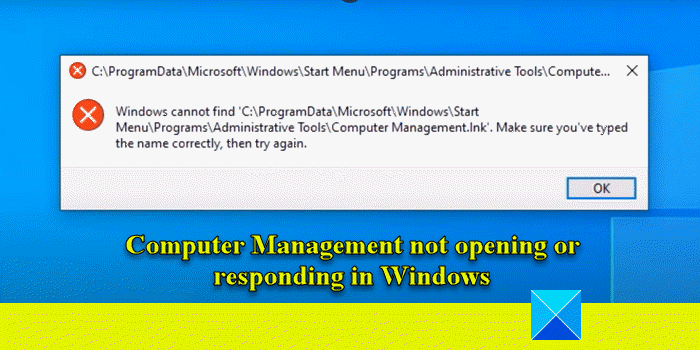
A few users have reported that they cannot access Computer Management on their Windows 11/10 PC. When they right-click on the ‘This PC’ and select Manage, an error message appears that says:
Windows cannot find ‘C:\ProgramData\Microsoft\Windows\Start Menu\Programs\Administrative Tools\Computer Management.lnk’. Make sure you typed the name correctly, and then try again.
In this post, we will see why this issue occurs and show you how to troubleshoot it.
Why is Computer Management not opening?
Computer Management may not open on a Windows PC due to system file corruption, outdated drivers, profile issues, or lack of account permissions. If you cannot access Computer Management through the ‘Manage’ context menu item, a third-party shell extension may be interfering. In some cases, Group Policy restrictions can also affect the execution of certain administrative tools, including Computer Management.
Computer Management not opening or responding in Windows 11/10
To fix Computer Management if it is not opening in Windows, we suggest taking the following steps:
- Perform an SFC scan.
- Disable any third-party shell extensions.
- Assign administrator privileges to your account.
- Recreate the folder under Administrative Tools.
- Try another way of opening Computer Management.
Let us see this in detail.
1] Perform an SFC scan
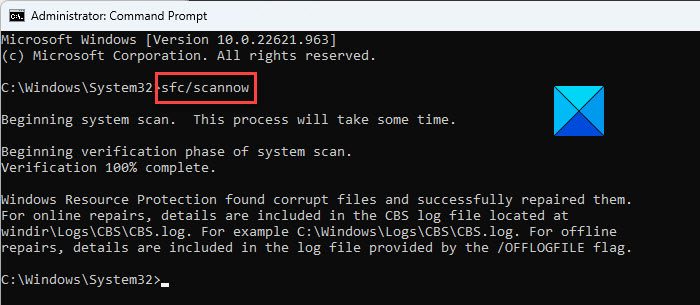
System files and libraries are necessary for the proper functioning of many Windows applications, including Computer Management. If they go corrupt or missing, issues may arise while running these applications. System File Checker (SFC) is a useful tool that can scan a PC for corrupt or missing system files and repair them automatically.
To run an SFC scan, open Command Prompt using administrator privileges and execute the following command:
sfc /scannow
Once the scan completes, reboot your PC and try accessing Computer Management again.
2] Disable any third-party shell extensions
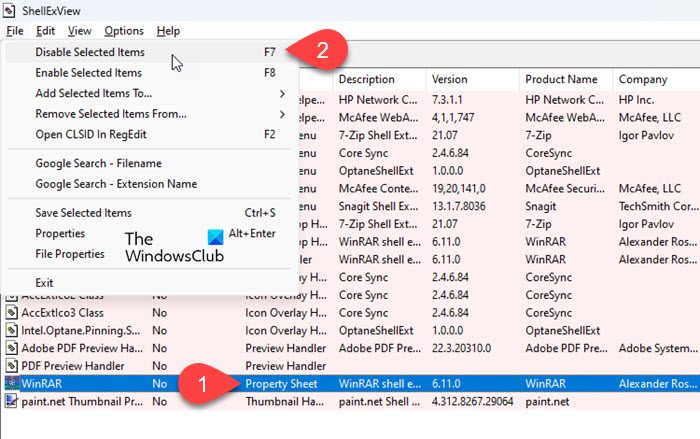
If the issue only appears when you right-click on This PC icon and click on Manage, there may be a conflicting third-party shell extension on your PC. ShellExView is a great utility that helps identify and disable extensions installed via third-party software. Run ShellExView and see if you can find any non-Microsoft shell extensions (marked in pink color). If yes, disable all those extensions and try clicking on ‘Manage’. If Computer Management runs, enable extensions one by one until Computer Management stops working again. You will find the shell extension creating the issue.
Tip: If you see QuickSFV listed in ShellExView, disable it first and try running Computer Management.
3] Assign administrator privileges to your account
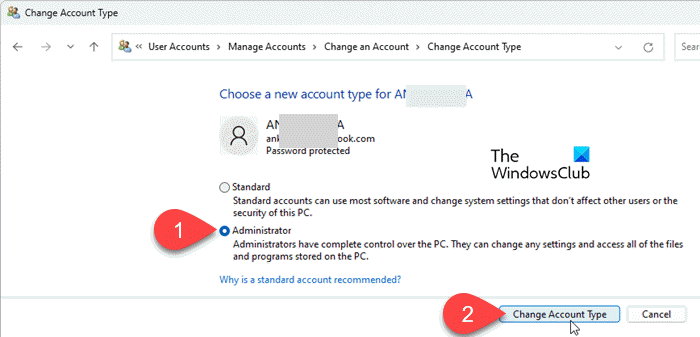
Computer Management needs administrator rights to run. If you’re not signed into Windows using an administrator account, you may encounter issues accessing Computer Management. Check if your user account has admin rights. If not, we recommend changing the account type from standard user to administrator, or switching to an administrator account on your Windows 11/10 PC.
To change the account type, open Control Panel and click on Change account type (under User Accounts) > [your_account_name] > Change the account type. Select Administrator and press the Change Account Type button.
Note: PIN/Password of the primary administrator account is required to change an account type in Windows.
4] Recreate the folder under Administrative Tools
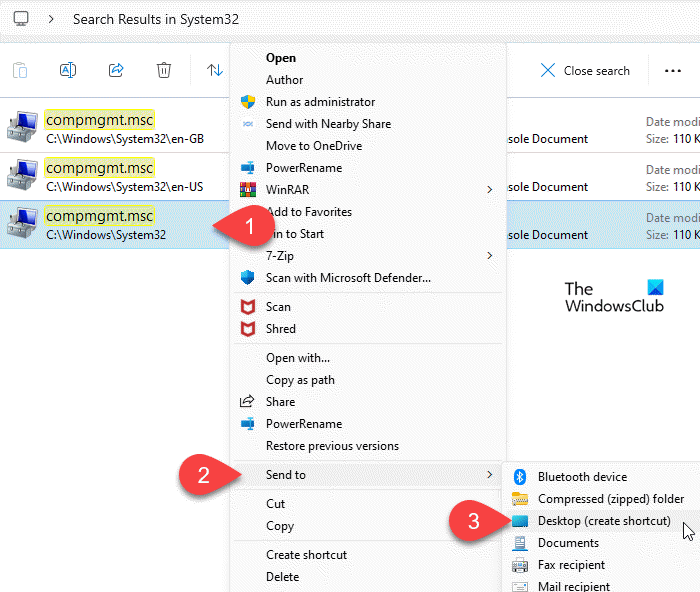
A tried and tested workaround to fix this issue is to recreate the Computer Management folder under Windows Administrative Tools.
Note: To perform the following steps, you need to sign into Windows using an administrator account.
Open File Explorer and navigate to the following folder:
C:\Windows\System32
Type compmgmt.msc in the search bar in the top-right corner. The file will show up in search results. Right-click on it and select Send to > Desktop (Create shortcut). This will create a desktop shortcut for Computer Management.
Before you move this folder to the Administrative Tools folder, you need to rename it as ‘Computer Management‘. This step is very important as the workaround will not work if you forget to rename the shortcut.
After renaming the shortcut, right-click on its icon and select Cut. Go back to the File Explorer window and click on the View option in the toolbar. Select Show > Hidden items. Then navigate to the following folder:
C:\ProgramData\Microsoft\Windows\Start Menu\Programs\Administrative Tools
If you have Windows 11, navigate to:
C:\ProgramData\Microsoft\Windows\Start Menu\Programs\Windows Tools
Right-click anywhere in the blank area and select Paste. A prompt will appear asking for administrator permission to move the copied content. Click on the Continue button. Your system will copy Computer Management into the destination folder.
Close the File Explorer window and try using the ‘Manage’ option to open Computer Management. It should hopefully start working.
5] Try another way of opening Computer Management
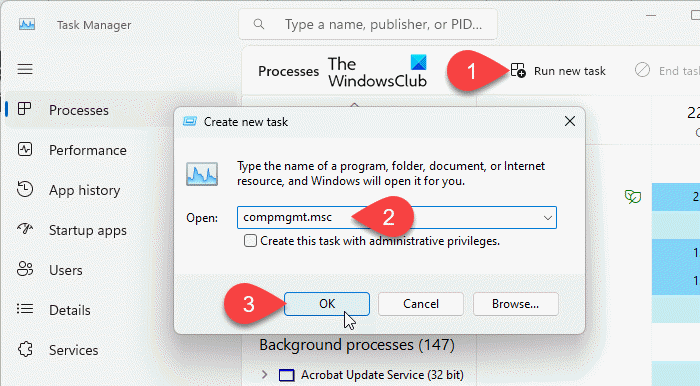
You may also try using an alternate method to open the Computer Management console window. There are numerous ways of opening Computer Management in Windows.
For example, you can run Computer Management using the Task Manager. Right-click anywhere in the empty space on the taskbar area and select Task Manager. Click on the Run new task button at the top. In the Create new task window, type compmgmt.msc in the Open field and click on OK.
Similarly, you can open Computer Manager using Command Prompt. Press Win+R and type cmd in the Run dialogue box. Press Ctrl+Shift+Enter. A User Account Control prompt will appear. Click on the Yes button to run Command Prompt as an administrator. Now type compmgmt.msc in the Command Prompt window and press the Enter key.
If you can’t open Computer Management using one way, try another way and see if it works.
If nothing seems to work, you may have to repair the System Image using DISM.
Read: Fix Disk Management errors in Windows.
Why my Device Manager is not opening?
There could be several reasons why Device Manager is not opening on your Windows PC, including corrupt or missing system files, outdated drivers, and incorrect registry settings. It may also not open if your administrator blocks it. Try an alternate method to open Device Manager, such as using the Run dialog box, Command Prompt, or Computer Management.
Read Next: How to open and use Windows Services Manager.
Leave a Reply